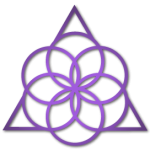Under the auspices of Mr. Kenta Nakano of Studio Bowspring in Japan, Desi Springer and I spent another enriching and mind-expanding week-long experience in Tokyo this past month – September 2017.
One of Kenta-san’s explicit intentions with sponsoring Desi Springer and me to visit Japan annually over the past 4 years, is to educate us on the highest forms of ancient Japanese art and culture in order to positively influence the Bowspring method globally.
On this recent trip, Kenta-san arranged a private training in the Ogasawara-ryu tradition of etiquette and self-mastery. The fundamental postural and mental techniques that we learned trace back 831 years to Ogasawara Nagakiyo. This mind-body master taught the Samurai and royalty of the Kamakura Shoganate to gracefully shoot an arrow with incredible precision from a long bow while galloping on the back of a horse at high speed.
The Ogasawara-ryu techniques are strictly defined with exact postural alignment descriptions for the ribcage, hands, fingers, knees, feet, and toes in a variety of basic forms like standing, walking, kneeling, sitting, and squatting. By practicing the simplest postural forms with precise alignment in everyday actions, students apply the same general forms to become highly skillful in archery and horseback riding, and ultimately cultivate clarity of mind and a refined character over time.
Desi and I were taught the kata of squatting in Horse pose with our ribcages (hearts) fully expanded in a ‘circular’ (spherical) form, while balancing two smooth chopsticks lying on the flat surface of an empty cardboard box. The balance was so delicate that with any sudden movement or imbalanced alignment in the pose, the chopsticks would easily roll off and spill to the floor. With our eyes floating on the horizon, we learned to squat and kneel without disturbing the chopsticks.
A key focus in all of the Ogasawara-ryu practices is being strongly rooted in the Hara or the lower Dan Tien, the energy center of Ki in the lower belly below the navel. With every exhalation, the energy is moved downward into the feet and toes like water seeping down into the soft and heavy Earth, and with every inhalation, there is an engaged effort to rise and extend up through the top of the head like smoke spiraling up from the fire in the Hara.
These techniques have remained consistent within the Ogasawara family lineage for 28 unbroken generations. The overarching philosophical view of the Ogasawara-ryu practices encompasses a Zen-influenced lifestyle in which the most basic daily postures and movements are used as forms of dynamic meditation.
Proper etiquette or good form leads to a “colorless, formless” mind shining with natural beauty and health. Simplicity, efficiency of movement and balance are considered natural in this method, yet paradoxically disciplined mind-body training is required over many years to attain this natural state. Mastery of this unbounded and clear state of mind is cultivated over time by the regular practice of simple, refined postural katas coordinated with the breath and specific meditative focuses. In the Ogasawara-ryu, daily actions such as sitting, standing, walking, turning, carrying objects, and bowing are practiced with ever-increasing beauty and graceful balance of mind and body.
Each time we study in Japan, we gain so much to integrate into our Bowspring method and into our lives! As Kenta-san hoped, Desi and I are spreading these ancient Japanese mind-body training techniques worldwide through the 21st century practice of the Bowspring.

